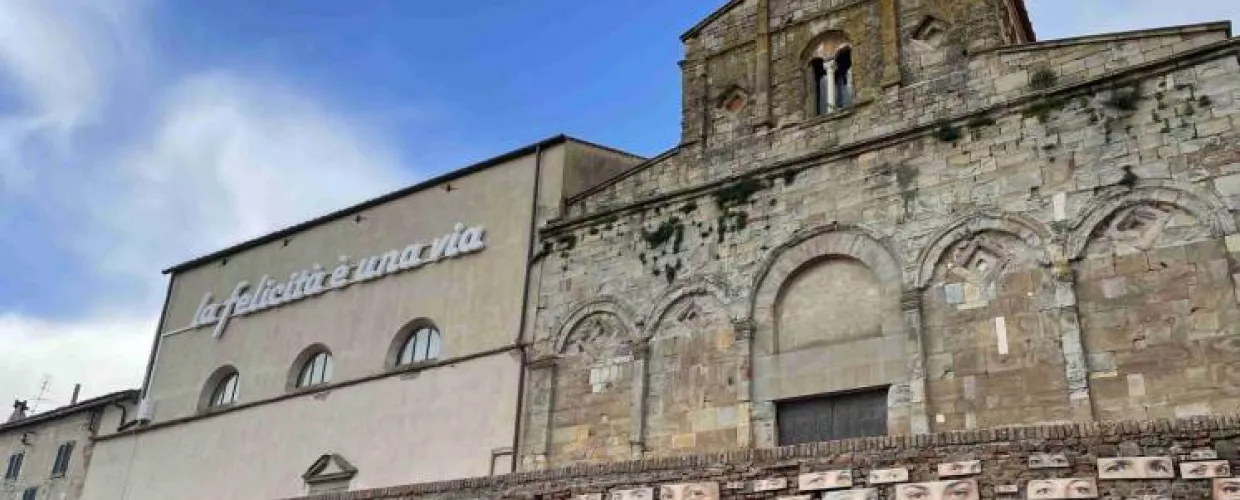

Overview
Orange Flag of the Italian Touring Club
Arriving in Peccioli, one immediately notices the blend of old and new, ancient and contemporary. Medieval, clustered around the ruins of the fortress of Castruccio Castracani, the village of Peccioli features narrow and steep streets called “chiassi,” buildings that recall the past, such as the loggia of Piazza del Popolo, the Palazzo Pretorio, and the Pieve of St. Verano, archaeological excavations in nearby Ortaglia, which have brought to light Etruscan artifacts now preserved in the Archaeological Museum, the rural history of the area, visible in the Serre countryside and its farmhouses once inhabited by sharecroppers, and finally, the tabernacle by Benozzo Gozzoli (1480) housed in the Chapel of St. Catherine in Legoli, a hamlet of Peccioli.
All these references are accompanied by contemporary art installations, both old and recent, which have beautified the village and turned it into an open-air museum. For example, the work of Vittorio Corsini, which reproduces the gaze of the people of Peccioli under the Pieve of St. Verano, or Endless Sunset by Patrick Tuttofuoco, a rainbow spiral that enhances the walkway connecting the historic center to the new part of the village. There is also via di mezzo, in Ghizzano, painted by David Tremlett, while the Legoli landfill has been transformed into a futuristic waste disposal and recycling plant, a place for events and cultural activities where the Presenze, giant humanoid sculptures by Naturaliter, have been placed. The landfill is now a true example of how the correct treatment of waste can bring positive economic, cultural, social, and tourism-related impacts to the area. For those who love outdoor life, there is the “Constellation,” a set of six routes to cycle through the surrounding hills. At the table, among the many typical products and dishes, we highlight the bastoncelli, a typical sweet offering for which every family has its own recipe, passed down through generations.